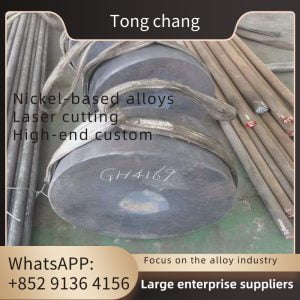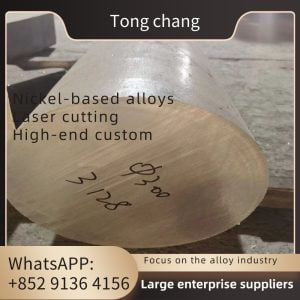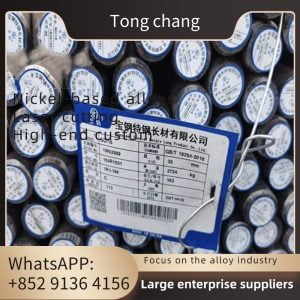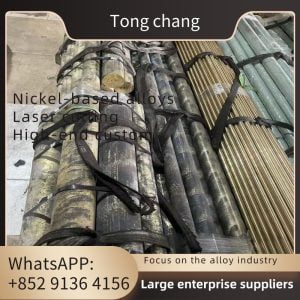| Standard: | ASTM A240, ASME SA240 | Material: | 304/UNS S30400/1.4301 |
|---|---|---|---|
| Shape: | Round, Oval, Acc To The Drawing | Application: | SuperHeater/ Heat Exchanger |
| High Light: | Heat Exchanger Steel Baffle Plate, 1.4301 Stainless Steel Baffle Plate, Stainless Steel Heat Exchanger Parts | ||
ASTM A240 F304 / UNS S30400 / 1.4301 Stainless Steel Baffle Plate For Heat Exchanger
The baffle plate also referred to a heat deflector plate, sits at the top of the fire box chamber. Baffles can be made of cast iron, heavy steel, stainless steel or vermiculite. It is designed to deflect heat back into the fire box to prevent waste gases and heat being lost through the flue too quickly. By reflecting heat back into the firebox this aids in secondary combustion of waste gases to produce even more heat.
Specifications | |
|---|---|
| Duplex Stainless Steel | ASTM/ASME SA182 F44, F45, F51, F53, F55, F60, F61 |
| Stainless Steel | ASTM/ASME SA182 F304,304L,F316,316L, F310, F317L, F321, F347 |
| Carbon Steel | ASTM/ASME A105, A350 LF1, LF2, A266, A694, A765 Gr.2 |
| Alloy Steel | ASTM/ASME SA182 F1, F5, F9, F11, F12, F22, F51, A350-LF3 |
| Non Ferrous | Titanium, Brass, Al-Brass, Copper Nickel, Nickel Alloys, Hastelloy |
| Titanium | ASTM/ASME SB381, Gr.1, Gr.2, Gr.5, Gr.7, Gr.12, Gr.16 |
| Copper Nickel | ASTM/ASME SB151, UNS 70600(Cu-Ni 90/10), 71500(Cu-Ni 70/30) |
| Brass, Al-brass | ASTM/ASME SB152 UNS C10100, C10200,C10300,C10800,C12200 |
| Nickel Alloys | ASTM/ASME SB169,SB171, SB564, UNS 2200, UNS 4400, UNS 8825 UNS 6600, UNS 6601, UNS 6625 |
| Alloy 20 | ASTM/ASME SB472 UNS N08020 |
| Hastelloy | ASTM/ASME SB564, UNS10276 ( C 276 ) |
| Claded materials | ASTM/ASME SB898, SB263, SB264 or closer explosion cladding, making materials of 2 in 1 or 3 in 1. |
| Titanium- Steel, Nickel-Steel,Titanium- Copper, Stainless Steel- Carbon Steel, Alloys- Steel etc. | |
Implementation of baffles is decided on the basis of size, cost and their ability to lend support to the tube bundles and direct flow:
- Longitudinal Flow Baffles (used in a two-pass shell)
- Impingement Baffles (used for protecting bundle when entrance velocity is high)
- Orifice Baffles
- Single segmental
- Double segmental
- Support/Blanking baffles
- Deresonating (detuning) baffles used to reduce tube vibration
Use of Baffle
The main roles of a baffle in a shell and tube heat exchanger are to:
- Hold tubes in position (preventing sagging), both in production and operation
- Prevent the effects of steam starvation, which is increased with both fluid velocity and the length of the exchanger
- Direct shell-side fluid flow along tube field. This increases fluid velocity and the effective heat transfer co-efficient of the exchanger
In a static mixer, baffles are used to minimize the tangential component of velocity which causes vortex formation, and thus promotes mixing.
In a chemical reactor, baffles are often attached to the interior walls to promote mixing and thus increase heat transfer and possibly chemical reaction rates.
In a household stoves like Handölkassetten and similar stoves a baffle is used to prevent the gas from going directly up in the chimney and possibly causing a chimney fire and direct the gas towards the front of the oven before it continues upwards into the chimney. In this case the baffle helps increase the efficiency of the stove as more heat leaves the gas before it exits.
- The baffles prevent the rotational flow without affecting radial or longitudinal flow. The tank is provided with baffles which prevent swirling and vortex formation. Except in very large tanks, four baffles are placed.







